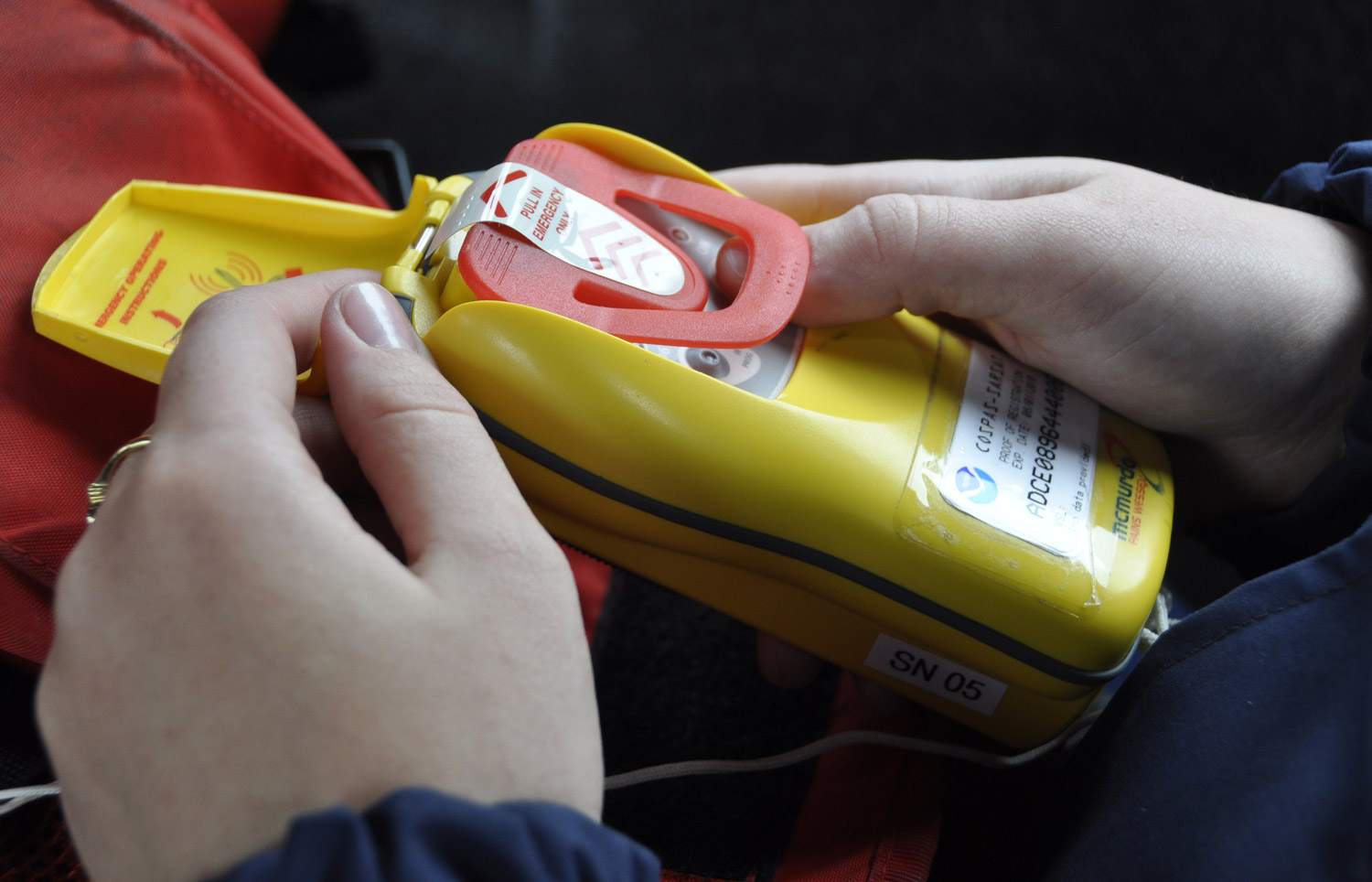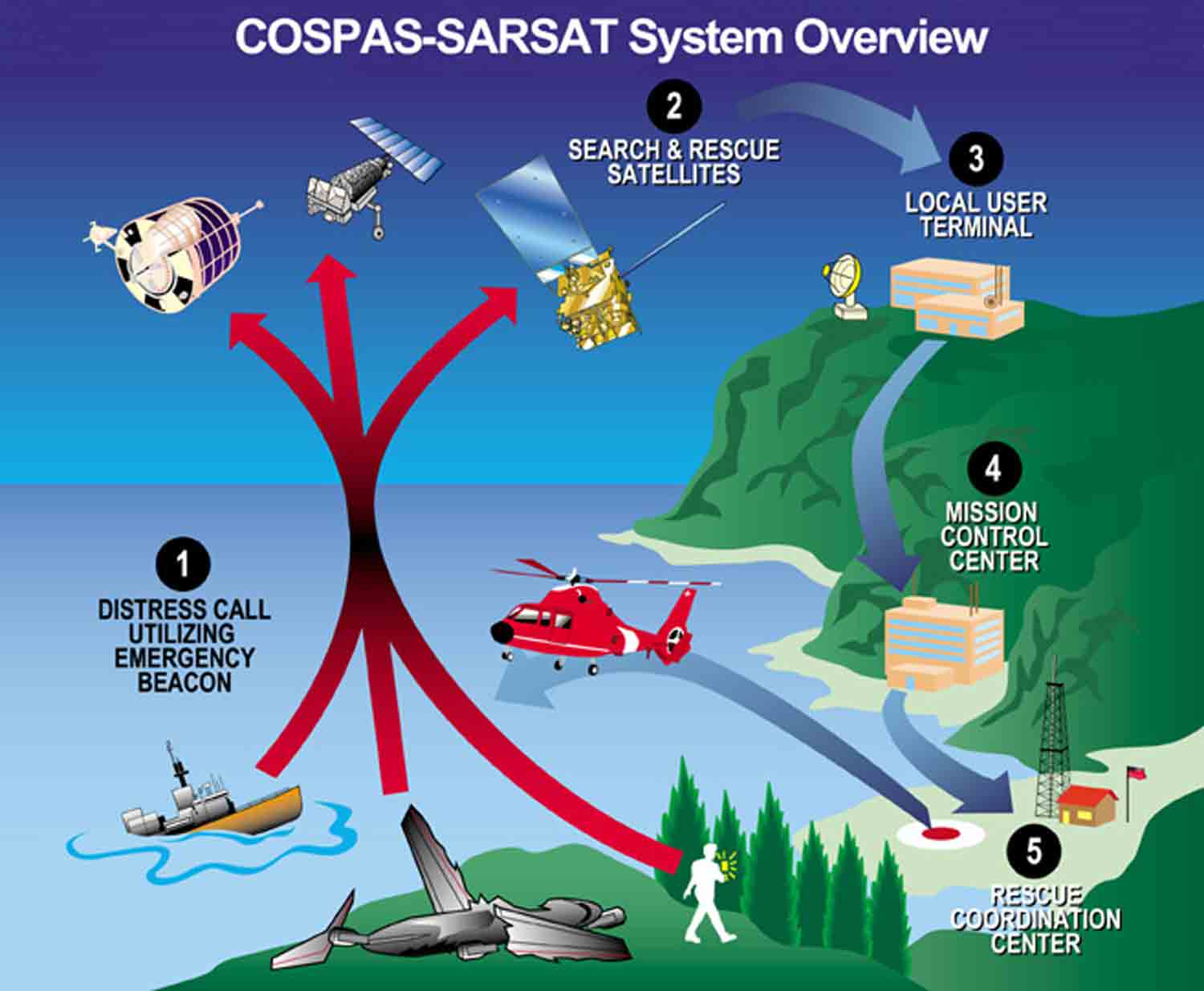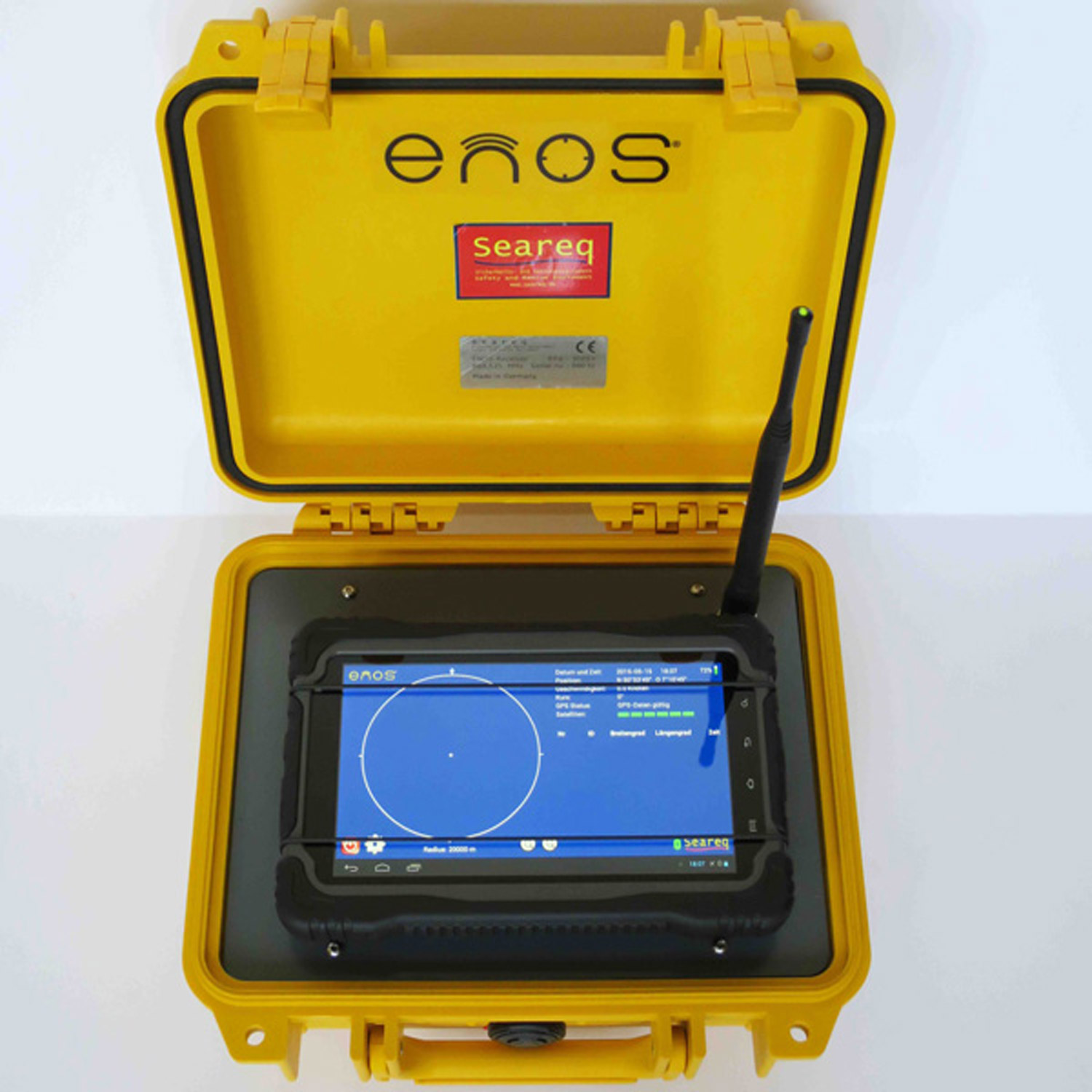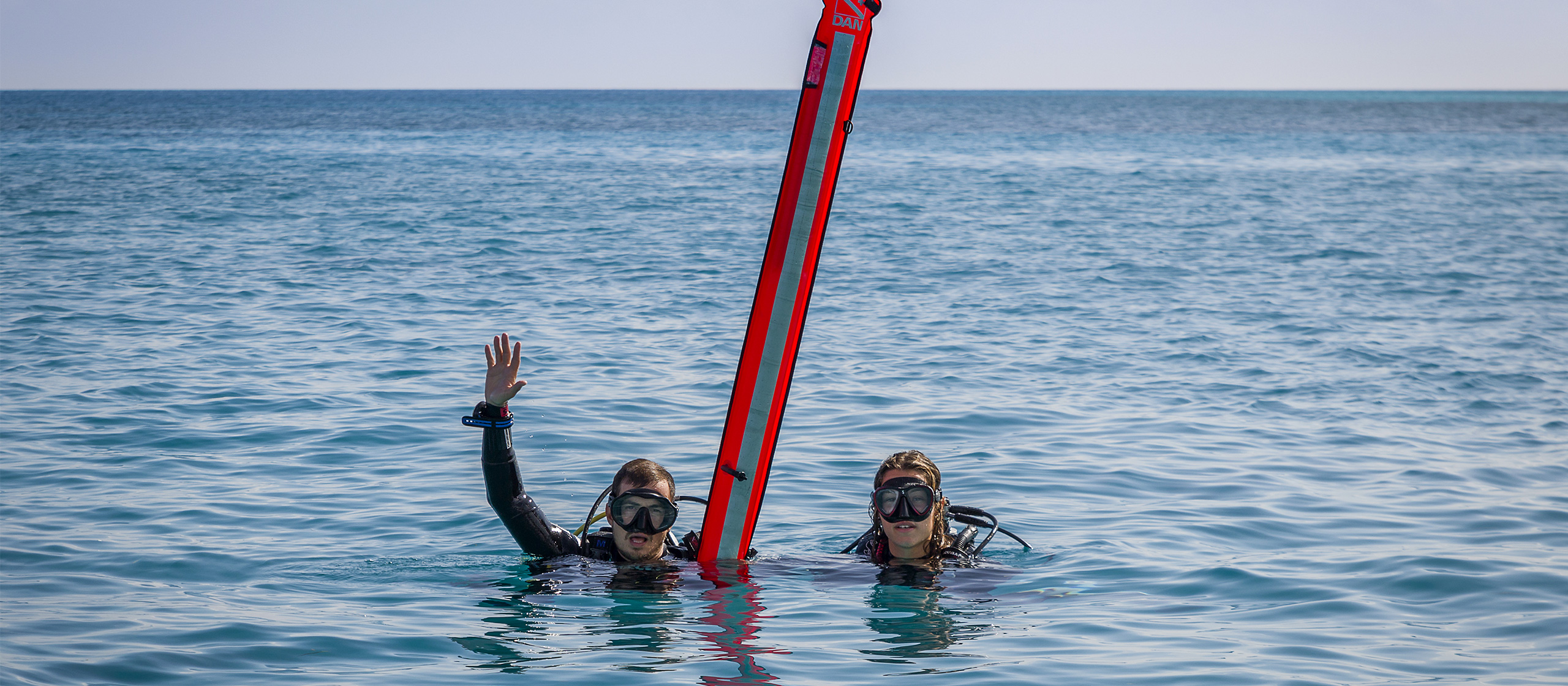Safety
Lost at sea? Increase your chances in getting found again
When you find yourself too far away from the dive boat/shore, a DSMB and whistle can help to attract attention, but these 2 devices may not have the effect you are hoping for. Several other safety tools are available but less common or even unknown to divers.
An air horn (a mechanical whistle attached to your intermediate pressure hose) increases chances to be heard from a distance, but if this doesn’t help, you will then have to rely on the Search and Rescue (SAR) services to get found. Depending on the local situation, including availability, boats, planes or helicopters may be used during the search operation.
This is when you might wish that you were the size of an elephant to attract attention. However, in reality you will be just a small speck (or one might say insignificant “mouse”) on the surface. When a plane or helicopter is used during the search operation, there are a few useful tools available to divers. The first is a mirror: you can “catch” the sun and reflect the sunrays towards the plane or helicopter, and even, to a less likely degree, a boat. In addition, and surely helpful for SAR actions from the sky, a Rescue Streamer can make a difference.
Remember you are as small as a mouse but you want to appear as an elephant. This is exactly what the Rescue Streamer does. Contained in a small holster, a floating polyethylene foil, complete with SOLAS1 reflectors and chemical lights, can be deployed at the surface. This foil, when opened, is about 7.5m long and 15cm wide, making it possible to be seen from over a — distance, thereby increasing chances to be spotted from the sky.
Even more effective equipment exists, but at a relatively elevated cost. However, when lost, you would be prepared to pay ten or even a hundred times more than what standard equipment might actually cost. What you really want is to be “visible” even when nobody can actually ‘see’ you, and be sure that help is on its way.
Let’s take a look of some electronic safety tools, that could be of vital importance in a lost diver situation.
The Personal Location Beacon (PLB)

A PLB is a personal locator beacon, allowing SAR Services to locate a person on land or sea. When activated, the PLB will transmit a coded message on the 406 MHz distress frequency, which is monitored by the COSPAS-SARSAT2 satellite network. This message is then forwarded via an earth station to the nearest Rescue Coordination Centre (RCC), which will activate the local SAR services.
Once in the area, rescue services are then able to find the diver using the inbuilt 121.5Mhz homing transmitter. If the PLB also has a built-in GPS its accuracy is about 60 meters.
COSPAS-SARSAT regulations require that the PLB battery must be able to transmit for at least 24 hours in cold conditions (-30°C), a duration that increases when used in normal conditions.

However, even when using a PLB you should not expect to be rescued in a matter of minutes. Although the activation of the emergency services itself can be fast, the time it really takes to be rescued depends on a number of factors, such as the remoteness of your location, weather conditions, time of the day and availability of local SAR services. Of course the more remote the location, the longer the response time and one should not expect the availability of a SAR helicopter in every destination. But, even if available, the activation might not be immediate and not all helicopters can operate after sunset.
PLBs come in relatively small sizes, but most of them are only water resistant, not pressure resistant. Some manufacturers do have a dive canister available making it possible to dive with it. PLBs do not require any ongoing subscription fees but need to be registered to a person.
Similar to a PLB, an Emergency Position Indicating Radio Beacon (EPIRB) works in the same way, but is designed to be carried by or registered to a vessel, not a person. They are bigger in size and able to transmit for a longer time, but due to the size and fact they are not pressure resistant, these can’t normally be used for diving purposes.
The Automatic Identification System (AIS) – Man Over Board (MOB) system

An AIS – MOB–system works in a different way to a PLB. Without going into detail, the system is designed to be carried by ship crew members and used in the event of a man overboard situation. When activated, this system transmits a MOB message containing the person’s position and identification ID via an AIS. The transmission will be detected by all AIS equipped vessels within range. An inbuilt GPS receiver and strobe helps rescuers pinpoint your precise location in the water.
However, this system does not send a distress call on the 406 MHz frequency, which means that you are actually dependent on possible nearby vessels to respond to the MOB signal. While this should be normal practice, there is no guarantee that a nearby ship will actually receive the signal and then respond.
If the boat you are diving off has an AIS system onboard, they will be able to track you immediately, which makes it easier to find you. Remember that if they do not have this system, they will then require assistance of SAR services, such as the Coast Guard, or a nearby vessel in locating you.
This is a valid alternative to a PLB and might even reduce the actual reaction time. However, the user should understand the difference. Interestingly enough, some AIS-MOB systems are waterproof till 60 metres or more.
You might also hear about Search and Rescue Transponder (AIS SART), which is a survivor location device intended for use on life rafts. This also uses AIS technology. In addition, the same technology is used by some companies who have designed and currently sell a diver location system, similar to a MOB system.
The ENOS®

The ENOS3 is a relatively well-known system, developed by Seareq, a German based company producing safety and Rescue equipment. It does not use either the 466 MHz frequency, nor AIS technology, but follows a similar principle. The ENOS®-System does not depend on the aid of rescue institutions and services. It comprises two units, a Receiver (aboard the dive boat) and one or more Transmitters (carried by the divers).
The receiver is the basis-station from where the rescue operation is initiated. After switching the receiver on, it indicates its position by GPS and is ready to receive and evaluate signals from the ENOS®-Transmitter(s). In an emergency, transmitters are activated by the divers. Their GPS position will be transmitted to the receiver by a license-free radio-frequency. The position of the transmitter, its distance and direction towards the receiver, are shown in an easy-understandable graphic on the receiver display screen.
The system allows an immediate response (locating and finding the lost diver) from those onboard the dive boat. But remember: ENOS does not activate any rescue service, neither does it transmits your location to nearby vessels. You are thus dependent on the dive boat for location and rescue. Without a doubt a very useful system, but since it always requires a receiver onboard a dive boat, it thus depends on the dive operator to invest in such a system and have it available for clients.
What else?
There are other similar electronic systems available. However, as for all the above-mentioned safety devices, please be sure to select a product from a reputable manufacturer, as not all available systems have, for example, the same operational range and work reliably.
So what about you? Surely you like to be seen when you get lost?
Looking for more safety materials that can help you in not getting lost? Discover DAN’s Don’t get lost safety campaign and download your copy of the safety brochure from our website, or check out a range of safety-related items in our online shop.
SOLAS1: Safety of Life at Sea – An international maritime convention which requires minimum safety standards for live saving materials (amongst others).
COSPAS-SARSAT2 : COSPAS-SARSAT is an international, humanitarian satellite-based search and rescue system. SARSAT is an acronym for Search and Rescue Satellite-Aided Tracking. COSPAS is an acronym for the Russian words “Cosmicheskaya Sistyema Poiska Avariynich Sudov,” which mean “Space System for the Search of Vessels in Distress,” indicative of the maritime origins of this distress alerting system.
ENOS3: In German: “Elektronisches Notruf- und Ortungssystem” which translates to an electronic rescue and location system.

